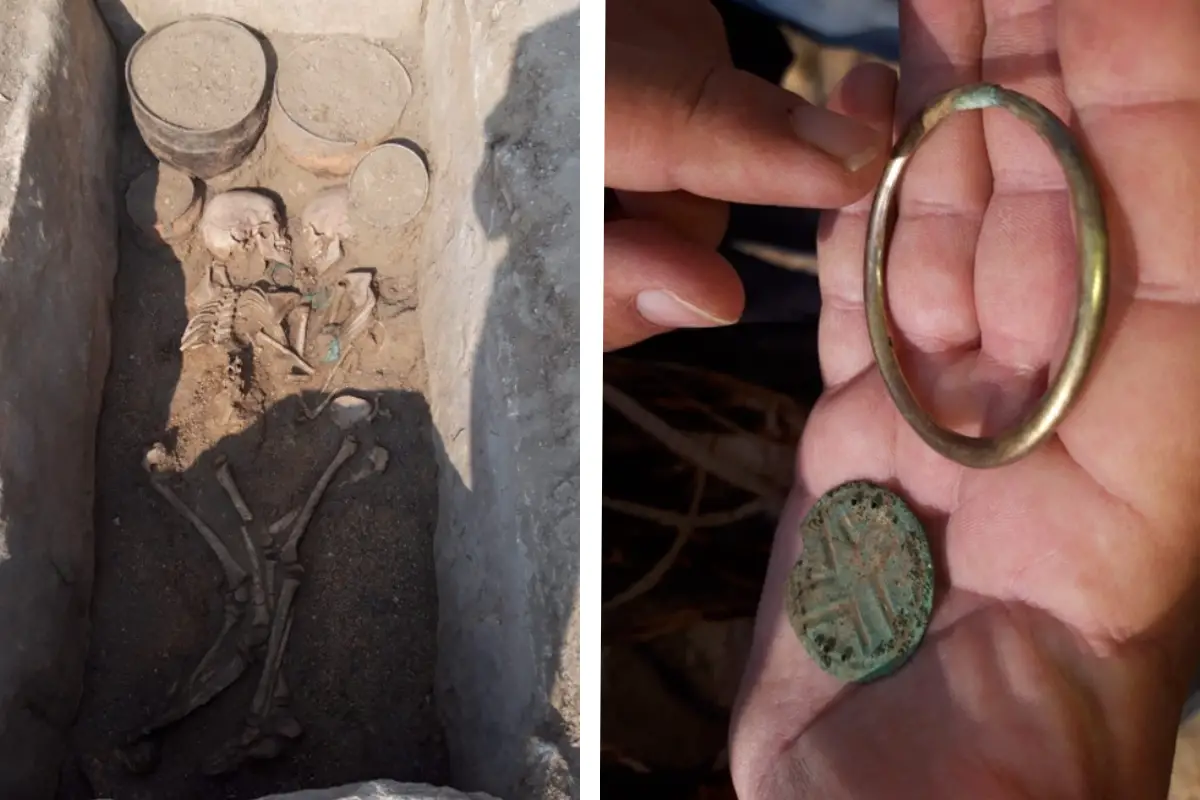Archaeologists in Kazakhstan have announced the discovery of an exceptionally well-preserved tomb attributed to the Begazi–Dandibay, a late Bronze Age culture known for constructing megalithic mausolea.
The Begazi–Dandibay culture (c. 1500-1100 BC) emerged in Saryarka in the Kazakh Uplands and spread to central Kazakhstan, Kyrgyzstan, and Uzbekistan. The culture takes its name from its two earliest archaeological type sites, Begazy and Dandybai.
The recently discovered tomb was excavated by archaeologists from the Saryarkinsky Archaeological Institute, revealing a well-preserved burial chamber containing two sets of human remains deliberately positioned side-by-side.
The first set are a young man and woman, buried facing one another in a symbolic expression of connection and status. Although the exact ages at death are yet to be determined, the associated grave goods suggest that they are likely members of a noble or ruling family.
Within the burial are intricately crafted jewellery, bronze implements, large ceramic vessels, beads, and several pieces adorned with gold.
The most significant find is a twisted bronze torque placed around the woman’s neck, along with gold decorative ornaments and a horse bridle – a symbol associated with wealth and prestige in steppe societies. The equestrian connection is further signified with the presence of horse remains in the tomb.
According to experts, the tomb could reshape our understanding of Begazi–Dandibay culture funerary practices, as very few sites remain undisturbed with the burial evidence intact.
DNA testing and an isotope analysis will provide further insights into the origins of the burials and their relationship to broader Bronze Age populations. The excavation continues as the site undergoes detailed documentation and conservation.
Header Image Credit : Saryarkinsky Archaeological Institute
Sources : Saryarkinsky Archaeological Institute





